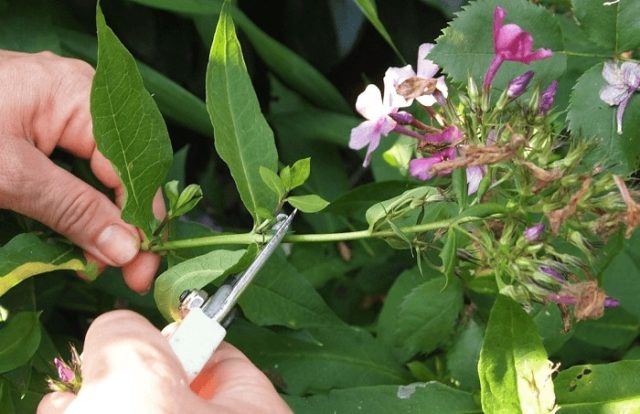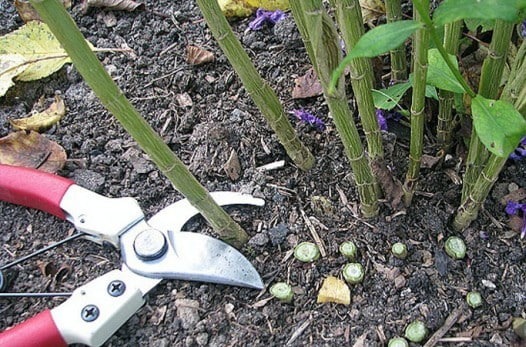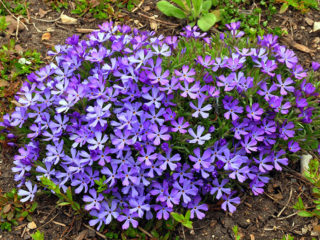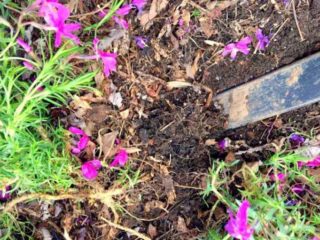Content
It is necessary to trim phlox not only because dry stems and inflorescences spoil the appearance of the plant and the entire area in the autumn-winter period, but also so that they successfully overwinter and delight the eye with lush flowering next year. The main task of the gardener is to comply with the pruning deadlines and carry out the procedure according to all the rules.
Should phlox be trimmed after flowering?
If you do not plan to get phlox seeds, you need to cut off the inflorescences. This will allow the plant not to waste nutrients on producing seeds and will maintain the neat appearance of the flower bed. It must be remembered that this procedure stimulates the growth of lateral peduncles, and therefore leads to repeated flowering.
Pruning faded phlox, especially those blooming closer to autumn, is undesirable in regions with short summers, since the second wave of flowering weakens the perennial before going into dormancy. In this case, it is better to wait and prune in the fall in preparation for planting for winter.Also, pruning of faded phlox is combined with a full autumn pruning of varieties with a late flowering period.
Under natural conditions, wild phlox overwinter along with the stems, but cultivated plants require special care in order to preserve their decorative qualities as much as possible. Experienced gardeners give several reasons why it is necessary to prune phlox after flowering for the winter:
- destruction of pathogens and pest larvae in plant residues;
- ensuring flowers are properly prepared for winter;
- accumulation in the roots of useful substances necessary for wintering and subsequent growing season;
- maintaining a neat appearance of the garden in winter.
After flowering, the flower stalks are removed, leaving a stem 50–60 cm high. Many gardeners simply break off the dry inflorescences to maintain a neat appearance of the flower bed. In the future, these shoots are also removed during complete pre-winter pruning.
When to prune phlox in the fall
Compliance with the deadlines for pruning phlox is an important condition for their decorativeness and preservation of health. Removing stems too early after flowering prevents the formation of growth buds on the roots and stimulates vegetative processes. Late pruning deprives the roots of the supply of nutrients necessary for successful wintering of flowers.
After flowering
In summer, faded phloxes are cut off immediately after flowering. Depending on the variety, the timing can vary from early July for very early varieties to mid-September for late bloomers.

After flowering, only the peduncles are removed, the stems are left until autumn pruning.
For the winter
You can prune phlox for the winter only after flowering has completed and all vegetative processes have stopped. Typically, this procedure is carried out in October, taking into account the flowering time of a particular variety and adjusted for climatic conditions. Since the process of formation of growth buds ends shortly before the onset of the first frost, pre-winter pruning of phlox should be done no earlier and no later than this time.
When to prune phlox in the fall in the Moscow region and regions
The climate and flowering period determine the timing of phlox pruning in the fall. The main thing is to have time to prune the plants after the stems begin to dry and before the first frost.
In the Leningrad region
Phlox pruning in St. Petersburg and the Leningrad region is carried out in early October. In the short autumn conditions of this region, you need to have time to remove the stems in the first 2 weeks of the month, before the soil temperature reaches negative values.
In Siberia
In Siberia, phloxes are either not cut off at all for the winter, or 10–20 cm of the above-ground part is left. In this case, pruning is carried out in late September - early October. In severe Siberian frosts, the remains of the stems retain the snow cover, which is the best insulation for the root system of the plant. This is especially true if phlox grows in open areas where the wind can blow away the snow cover. In addition, in this region, plants are mulched and insulated with spruce branches, corn or sunflower tops.
Some gardeners in Siberia dig up flowers and place them in the basement for the winter, after replanting them in containers.In the spring they are planted again in the garden in a flower bed.
In the middle lane
In the climatic conditions of the middle zone, autumn cooling occurs somewhat later, therefore, on its territory, in particular in the Moscow region, phloxes for the winter need to be cut in the second ten days of October when suitable weather sets in.
How to prune phlox correctly in the fall
When preparing for winter, several options for pruning perennials are used:
- complete removal of stems to ground level. It is allowed to leave the ground part no more than 2 cm high;
- cutting off stems at a level of 8–10 cm from the soil surface;
- trimming at 20 cm.
Phlox lovers have no consensus on which option to prefer. Most often, gardeners use the first pruning method, since longer stems prevent plants from preparing for winter and interfere with the growth of new shoots in the spring. Adherents of incomplete pruning believe that it is necessary to leave a small above-ground part, since it has growth buds, from which additional stems appear in the next season. However, opponents of this method note that shoots growing from the remains of last year's stems are much weaker than those growing from root buds, and therefore are of little value.

Most gardeners practice complete pruning of phlox.
Rules for pruning perennial phlox
To trim the stems, you will need garden pruning shears, gloves for the job, and a disinfectant.
In order for phlox to successfully overwinter, and next summer to please you with abundant flowers and lush greenery, in the fall, after flowering, they need to be pruned according to the following scheme:
- It is better to perform the procedure on a sunny, dry day;
- immediately before pruning, it is necessary to treat the soil around the flowers with a fungicide;
- be sure to disinfect the pruning shears with an alcohol-containing solution, concentrated potassium permanganate, or by calcining the cutting surface over a fire;
- cut stems at right angles;
- remove from the site and burn all plant debris.
Caring for phlox after pruning
Immediately after pruning the phlox in the fall, ash and mineral fertilizers are applied under the remains of the bushes for the winter. After a week and a half, the planting sites are mulched with peat, rotted compost, humus or fallen leaves. With the onset of winter, it is advisable to cover the plants with snow.
Conclusion
Phlox should not be trimmed only if the flowers are planted on the site in the fall or if seeds are planned to be collected. Also, some lovers of these flowers in Siberia prefer spring pruning. In other cases, all varieties of perennials need to remove the above-ground parts for the winter. The procedure, carried out in accordance with all the rules, significantly increases the endurance of plants and has a positive effect on their decorative qualities.








